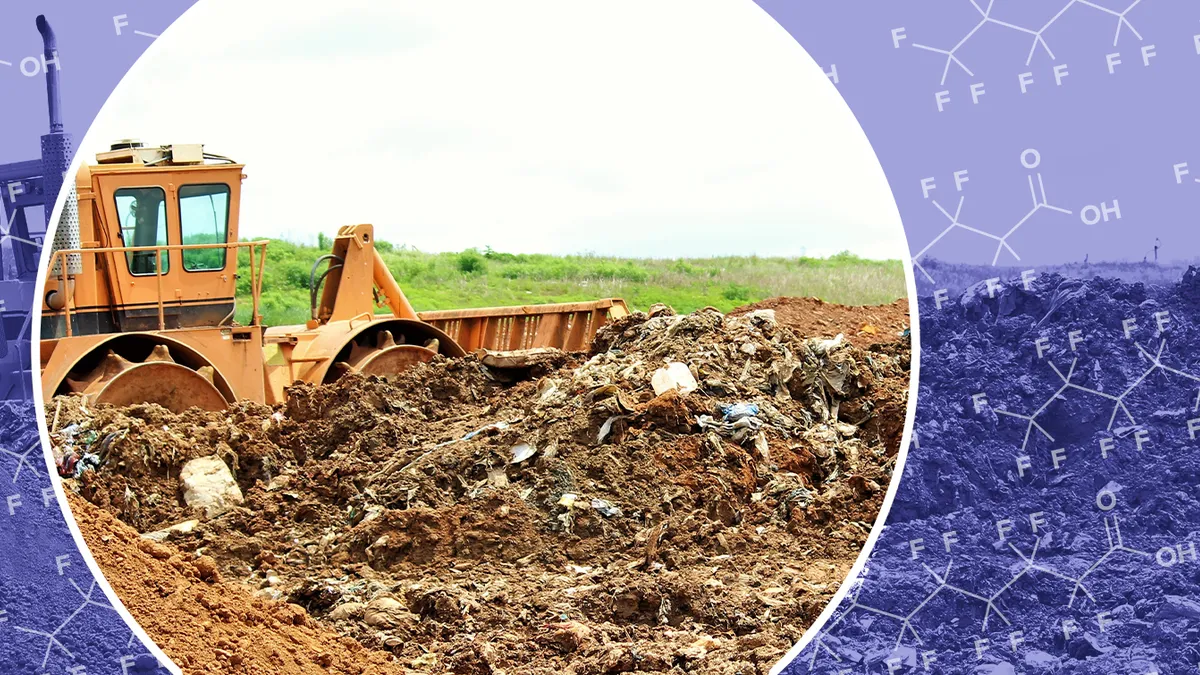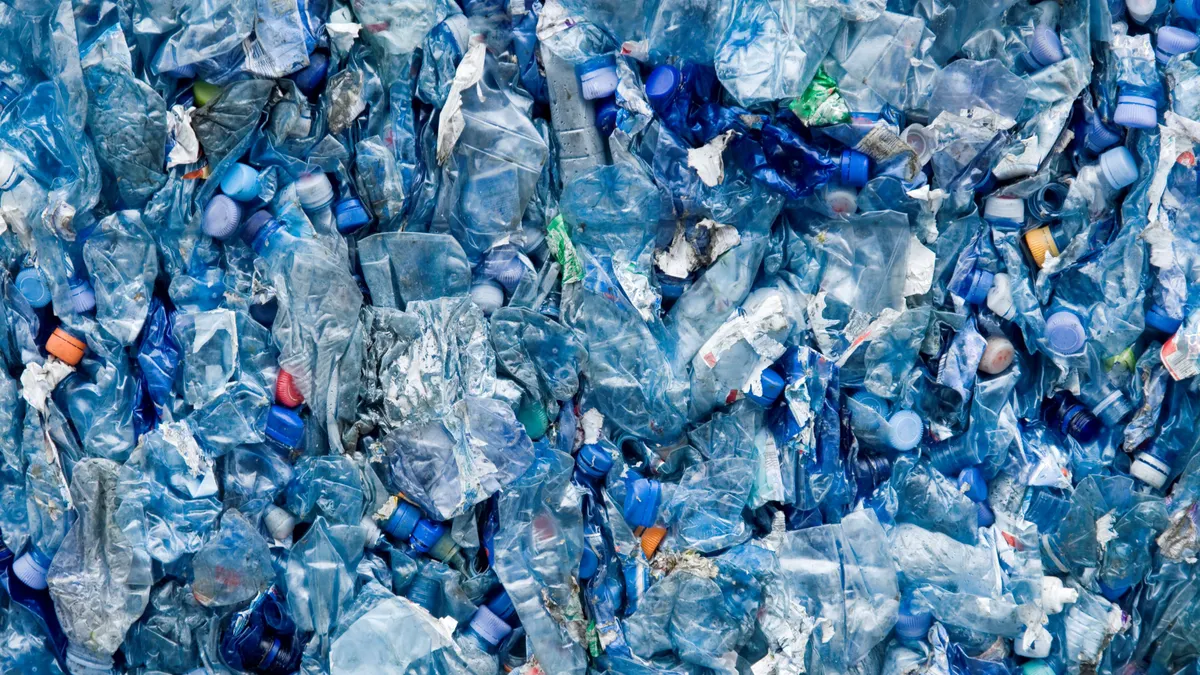The presence of "forever chemicals" in the waste stream remains a top concern for the industry, as operators shift towards long-term planning and experts increasingly point to potential future breakthroughs around treatment methodologies.
This year's virtual SWANApalooza (hosted by the Solid Waste Association of North America) featured numerous panels devoted to issues surrounding per- and polyfluoroalkyl subtances (PFAS), including emerging research about the chemicals. Potential treatment methods were another key focus, particularly for landfills. Speakers also acknowledged the presence of PFAS at organics processing facilities and incinerators, which is increasingly drawing attention from lawmakers.
"The train has left the station regarding regulating PFAS on a national level," said Frank Marine, president of Texas Molecular, a permitted hazardous waste disposal company, during one session.
Marine offered advice for landfill operators and others tackling PFAS, pointing to the realities of the issue as scrutiny over contamination expands to include the waste industry. "You have public perception and political response going on as it relates to PFAS," he said.
PFAS are inevitable in the waste stream given their prevalence in everyday items, ranging from nonstick pans to food packaging, and they do not break down naturally. While the U.S. EPA has not established a maximum contaminant level for any PFAS, the agency is facing pressure to do so for drinking water. PFAS in leachate and wastewater have received less attention, but Marine advised that the industry should plan with the future in mind.
"A lot of decisions are not made on regulation, but they're made on perceived risk for the future," he said, noting facilities could face retroactive liability if and when regulations ultimately arrive at the federal level, with legislation already underway in a number of states that could bring similar measures.
Part of planning for the future entails a focus on identifying contamination levels on a site-by-site basis, along with treatment and destruction. Researchers at the conference repeatedly stated, however, that much of their work remains in early stages and that significant study is still needed to expand the understanding of how PFAS interacts with waste systems.
Morton Barlaz, head of the Department of Civil, Construction, and Environmental Engineering at North Carolina State University, said part of the issue is the sheer number of PFAS.
"Most commercial labs can analyze for a set of 24 compounds specified by the EPA," he said, noting the chemicals are part of a family containing more than 4,000 substances.
Of those thousands of chemicals, two are the most often targeted by legislation — PFOS and PFOA, which have been repeatedly linked to health issues including cancer. Both are "long-chain" variations, a designation that typically implies six or more carbon atoms in a chain, with "short chain" indicating fewer carbons. Manufacturing of both chemicals is banned in the United States, and the EPA announced this week it will block imports of PFOA and a few other related substances.
PFOA has been replaced in production by GenX, a short-chain substance that lab tests have shown can cause many of the same health problems. And other, less well-known chemicals have been detected in leachate, including 5:3 FTCA, which researchers have found to be a major component of PFAS in landfill discharge at some sites. Under the EPA's Toxic Release Inventory, 172 PFAS are being monitored in 2020 for reporting in 2021. But Marine noted that reporting comes with a 100 pound threshold, a large amount given that PFAS is often measured in parts per trillion.
"The analysis is expensive and it's complicated. If you're starting from scratch, it can easily take six to 12 months to develop the methods, assuming you have a PhD chemist devoted to it and a very, very good instrument," said Barlaz.
Even after site operators understand what compounds they are dealing with, effective treatment options remain limited. Three of the most commonly cited technologies are granulated activated carbon (GAC), ion exchange (IX), and reverse osmosis (RO). All three offer the advantage of both onsite and offsite options, but each comes with various drawbacks. GAC and RO may both work better for long-chain compounds, for example, while IX can be less effective for PFOA. In each treatment method, it is unclear that the PFAS will be completely destroyed, and they may serve mostly to reduce the chemicals and bide time until more thoroughly destructive technologies emerge in the next few years.
Pretreatment is another significant factor. "PFAS treatment in landfill leachate is one of the most difficult of all PFAS technologies I've come across," said Francis Boodoo, director of applied technologies at Purolite Corporation. "You need a lot of pre-treatment. If you don't have good pretreatment, none of these technologies will work well."
Another option is incineration, which experts say works well with solids. Several speakers noted, however, that lawmakers are increasingly targeting PFAS incineration. And recent research in areas like Cohoes, New York has found issues around complete combustion. Destroying PFAS may involve temperatures of over 2,000 degrees Fahrenheit, along the levels of a hazardous waste incinerator and beyond the capabilities of some facilities.
Deep well injection is also feasible in some areas, like Texas and the wider Gulf Coast, where geology and a more open regulatory environment allow for that option. Marine cautioned that approach can be costly, given transportation to disposal sites, and a potentially lengthy permitting process.
More long-term solutions may rely on research already underway. Barlaz noted one study at North Carolina State University analyzing PFAS in landfill gas using a cross section of U.S. landfills. Other ongoing research at institutions nationwide includes studies on nanofiltration and electrochemical oxidation, as well as PFAS treatment methods and PFAS in publicly owned treatment works. And the SWANA Waste Conversion and Energy Recovery Applied Research Foundation's topic this year is the fate and transport of PFAS in waste-to-energy facilities.
That ongoing focus is shaping the industry's approach to tackling PFAS, even as Barlaz and others cited the importance of optics around the problem.
"Landfills and compost facilities and wastewater treatment plants did not make PFAS," he said, adding "they're receiving PFAS from you and me in society because we use things that contain PFAS."

















